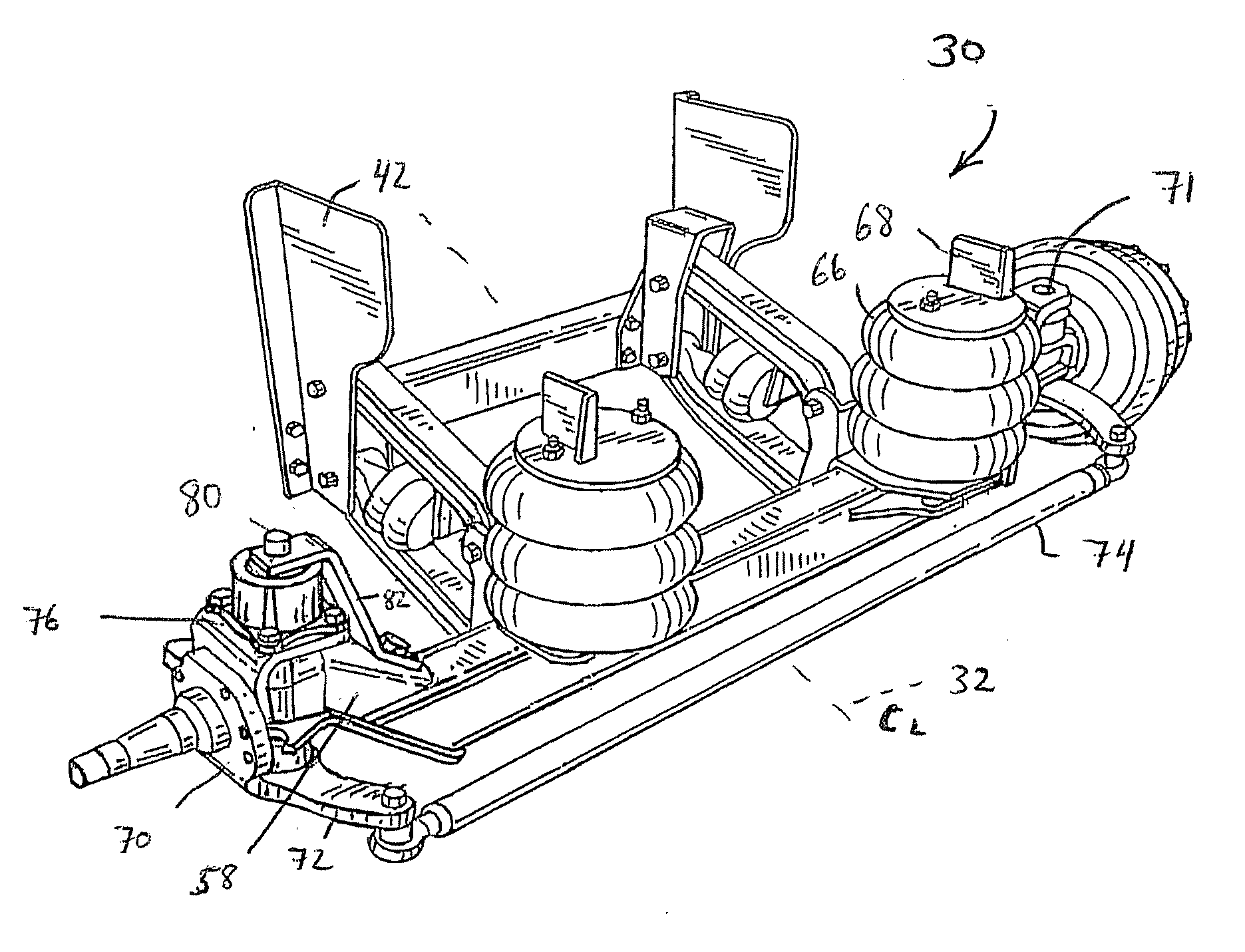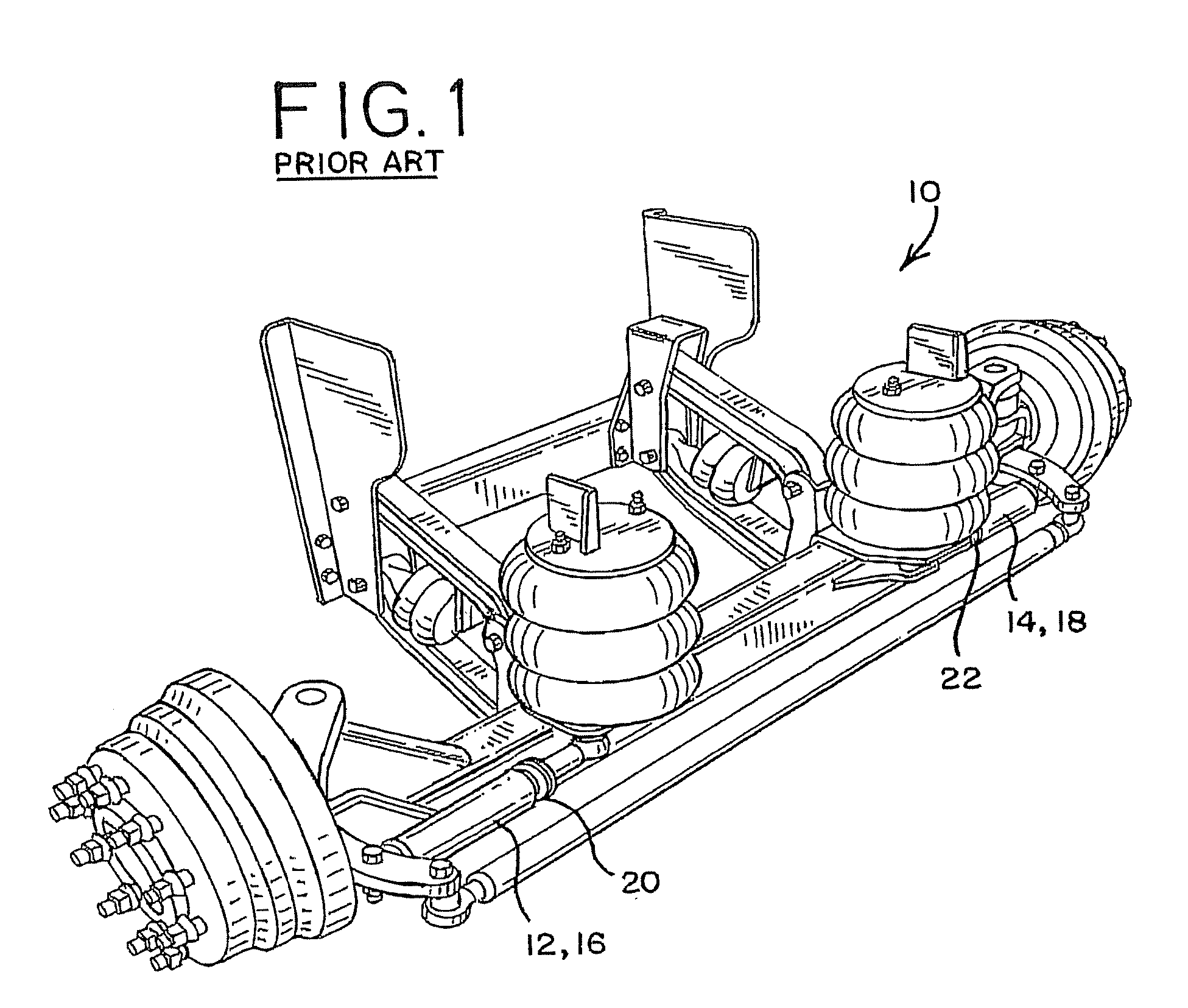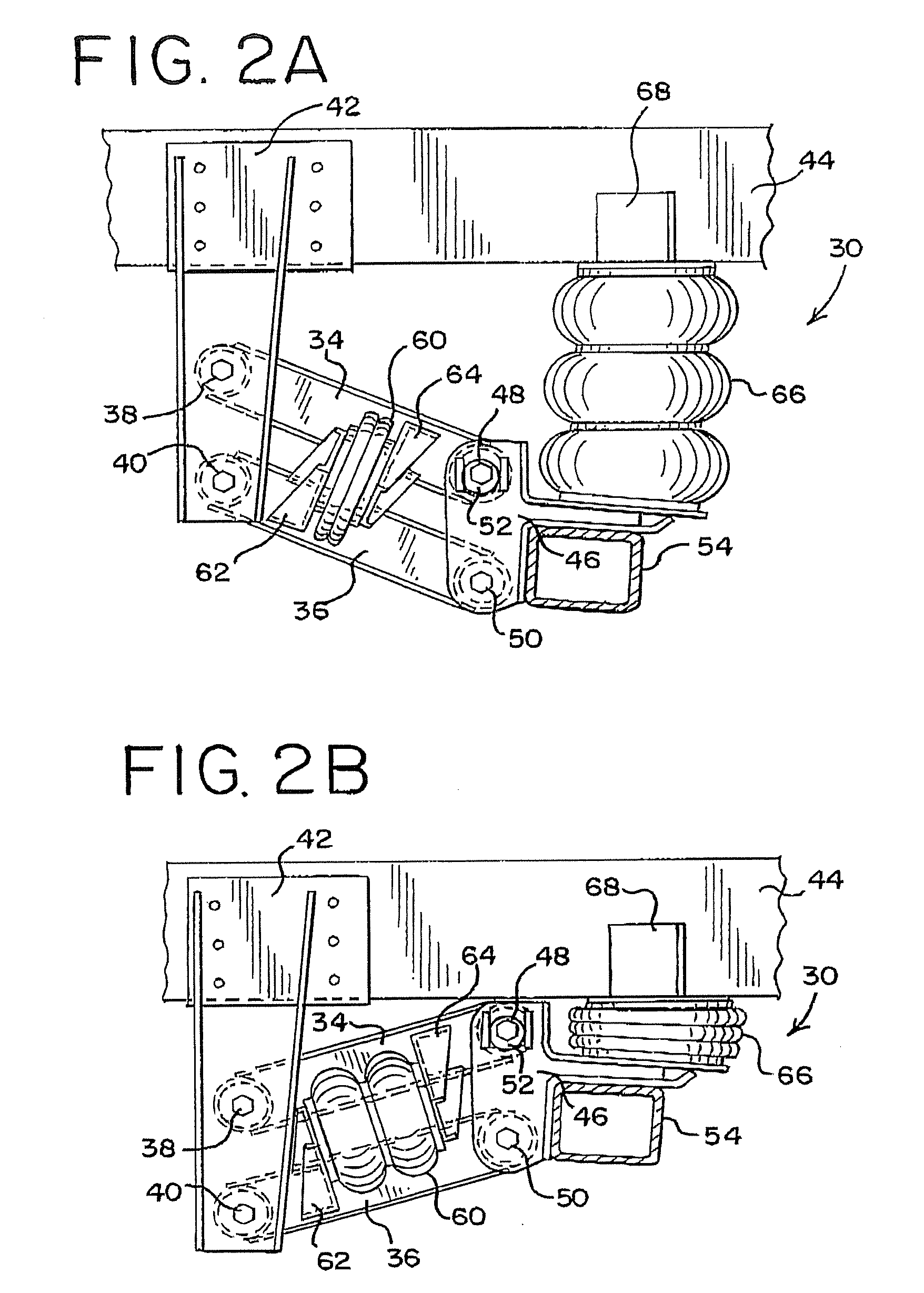Self-steering axle suspension system having a rotary stabilizer
- Summary
- Abstract
- Description
- Claims
- Application Information
AI Technical Summary
Benefits of technology
Problems solved by technology
Method used
Image
Examples
Embodiment Construction
[0024]FIGS. 2A, 2B and 3 illustrate a self-steering axle suspension system generally indicated by reference numeral 30. The illustrated self-steering axle suspension system 30 is a self-steering auxiliary lift-axle type of suspension system having a parallelogram, trailing arm geometry. The axle suspension system 30 is preferably a relatively lightweight suspension designed to permit compliance with any applicable bridge weight and stress regulations, such as the Federal Bridge Formula associated with relevant laws and regulations applicable within the United States of America.
[0025]While suspension system 30 is described as having these additional features, it will be appreciated that the present invention applies to all self-steering axle suspension systems for wheeled vehicles.
[0026]The suspension 30 illustrated in the figures is representative of an embodiment of the steerable, wheel-bearing lift axle suspension systems disclosed in U.S. Pat. No. 5,403,031 and U.S. Pat. No. 5,62...
PUM
 Login to View More
Login to View More Abstract
Description
Claims
Application Information
 Login to View More
Login to View More - R&D
- Intellectual Property
- Life Sciences
- Materials
- Tech Scout
- Unparalleled Data Quality
- Higher Quality Content
- 60% Fewer Hallucinations
Browse by: Latest US Patents, China's latest patents, Technical Efficacy Thesaurus, Application Domain, Technology Topic, Popular Technical Reports.
© 2025 PatSnap. All rights reserved.Legal|Privacy policy|Modern Slavery Act Transparency Statement|Sitemap|About US| Contact US: help@patsnap.com



